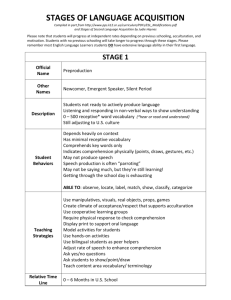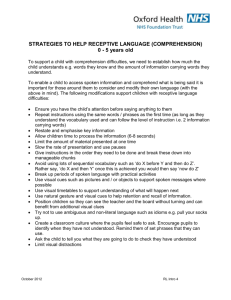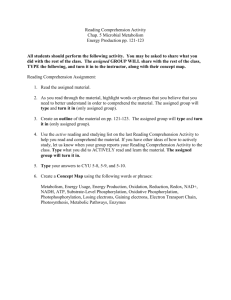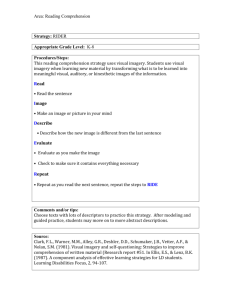LANGUAGE ACQUISTION CHART
advertisement
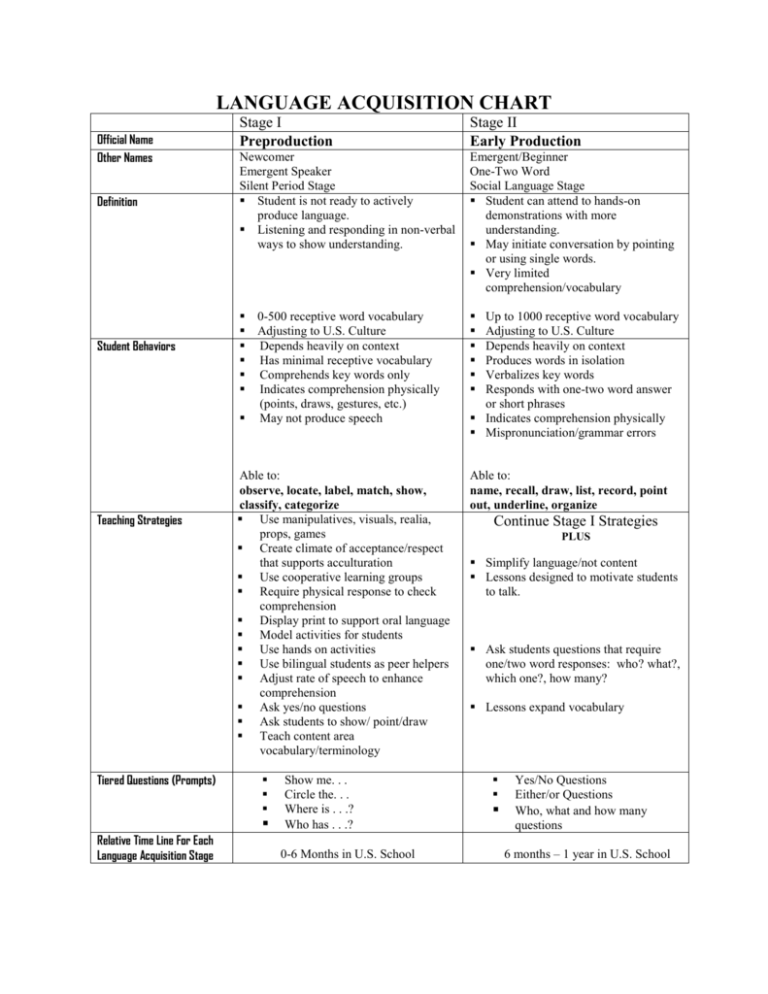
LANGUAGE ACQUISITION CHART Official Name Other Names Definition Student Behaviors Teaching Strategies Tiered Questions (Prompts) Stage I Preproduction Stage II Early Production Newcomer Emergent Speaker Silent Period Stage Student is not ready to actively produce language. Listening and responding in non-verbal ways to show understanding. Emergent/Beginner One-Two Word Social Language Stage Student can attend to hands-on demonstrations with more understanding. May initiate conversation by pointing or using single words. Very limited comprehension/vocabulary 0-500 receptive word vocabulary Adjusting to U.S. Culture Depends heavily on context Has minimal receptive vocabulary Comprehends key words only Indicates comprehension physically (points, draws, gestures, etc.) May not produce speech Able to: observe, locate, label, match, show, classify, categorize Use manipulatives, visuals, realia, props, games Create climate of acceptance/respect that supports acculturation Use cooperative learning groups Require physical response to check comprehension Display print to support oral language Model activities for students Use hands on activities Use bilingual students as peer helpers Adjust rate of speech to enhance comprehension Ask yes/no questions Ask students to show/ point/draw Teach content area vocabulary/terminology Able to: name, recall, draw, list, record, point out, underline, organize Relative Time Line For Each Language Acquisition Stage Show me. . . Circle the. . . Where is . . .? Who has . . .? 0-6 Months in U.S. School Up to 1000 receptive word vocabulary Adjusting to U.S. Culture Depends heavily on context Produces words in isolation Verbalizes key words Responds with one-two word answer or short phrases Indicates comprehension physically Mispronunciation/grammar errors Continue Stage I Strategies PLUS Simplify language/not content Lessons designed to motivate students to talk. Ask students questions that require one/two word responses: who? what?, which one?, how many? Lessons expand vocabulary Yes/No Questions Either/or Questions Who, what and how many questions 6 months – 1 year in U.S. School LANGUAGE ACQUISITION CHART (Continued) Official Name Other Names Definition Student Behaviors Stage III Speech Emergence Stage IV Intermediate Fluency Low Intermediate Short/Phrases/Simple Sentences Social Language Stage (BICS) Students begin speaking in short phrases and simple sentences Many mistakes in grammar, word order, word usage. Limited comprehension and vocabulary High Intermediate Bridging Academic Language Stage (CALP) Students can communicate thoughts more completely, can participate in every day conversations without highly contextualized support. Up to 7,000 receptive/active word vocabulary Depends heavily on context Produces whole sentences Makes some pronunciation and basic grammatical errors, but is understood Demonstrates comprehension by responding orally and in written form (charts, graphs, diagrams) Hears smaller elements of speech Functions on a social level Uses limited vocabulary Initiates conversation & questions Shows good comprehension (given rich context) Able to: Tell, describe, restate, compare, question, map, and dramatize. Up to 12,000 receptive/active word vocabulary Depends heavily on context Engage in and produce connected narrative (discourse) Shows good comprehension Uses expanded vocabulary Makes complex grammatical errors Functions somewhat on an academic level Teaching Strategies Continue Stage I & II Plus Tiered Questions (Prompts) Relative Time Line For Each Language Acquisition Stage List and review instructions step by step Build on students prior knowledge Incorporate more reading and writing Engage students in producing language such as describing, retelling, comparing, contrasting, summarizing, graphs, charts, diagrams, creating rebuses Why . . .? How . . .? Explain . . .? Questions requiring a phrase or shortsentence answers 1 year – 3 years in a U.S. School Able to: Imagine, create, appraise, contrast, predict, express, report, estimate, evaluate, and explain. Continue Stage I-III Strategies Plus Have students brainstorm, list, web, use graphic organizers. Ask questions soliciting opinions, judgment, explanation (more why and how questions) Introduce figurative language Develop more academic language (oral and written) What would happen if . . .? Why do you think . . .? Questions requiring more than a one sentence response 3 years – 5 years in U.S. School LANGUAGE ACQUISITION CHART (Continued) Official Name Other Names Definition Student Behaviors Stage V Advanced Fluency Exit able Fluent Academic Language Stage (CALP) Students have advanced skills in cognitive/academic language Beyond 12,000 receptive/active word vocabulary Functions on an academic level with age/grade peers Maintains two-way conversations Uses more complex grammatical structures Demonstrates comprehension in decontextualized situations Able to: relate, infer, hypothesize, outline, revise, suppose, verify, rewrite, assess, justify, critique, summarize, illustrate, judge, demonstrate Teaching Strategies Continue Stage I - IV Plus Tiered Questions (Prompts) Relative Time Line For Each Language Acquisition Stage Incorporate note-taking skills Enhance Study skills Test taking skills Demonstrate how to verify answers (oral and written) Expand figurative language (idioms) Decide if. . . Retell. . . 5 years – 7 years in U.S. School
